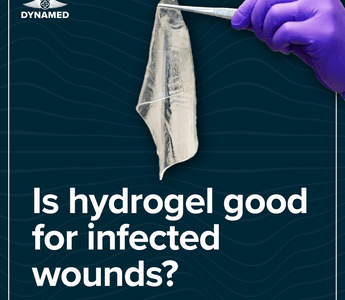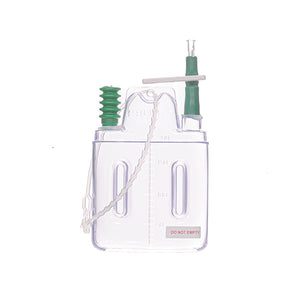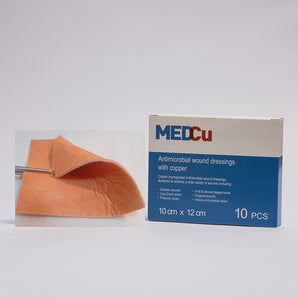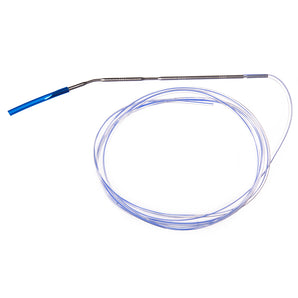Wound care is a critical aspect of recovery, and choosing the right dressing can significantly impact healing outcomes. For infected wounds, maintaining the right balance of moisture and protection is vital to support recovery while managing infection. This is where hydrogel dressings come into the conversation, offering unique properties that could benefit such wounds.
Hydrogel dressings are known for their ability to hydrate dry wounds and create an optimal healing environment. But when it comes to infected wounds, their role becomes more complex. By promoting moisture and cooling the wound bed, they may aid in easing discomfort and supporting tissue repair. However, understanding their suitability for infection management requires careful consideration of their features and limitations.
Key Takeaways
-
Hydrogel dressings promote healing by providing a moist environment crucial for tissue regeneration and infection management.
-
Antimicrobial hydrogels effectively control infections, particularly in wounds prone to bacterial contamination, such as pressure ulcers and surgical incisions.
-
Hydrogels offer pain relief and reduced inflammation through their cooling effect, enhancing patient comfort during recovery.
-
Types of hydrogels, including antibacterial and self-healing formulations, address diverse wound care needs, offering versatility in treating both simple and complex wounds.
-
Scientific research supports hydrogel efficacy, highlighting faster healing, improved infection control, and reduced risk of secondary complications.
-
Semi-transparent hydrogel designs allow easy wound monitoring, reducing dressing change frequency and minimising disruption to the healing process.
What Is Hydrogel And How Does It Work?
Hydrogel is a three-dimensional network composed of hydrophilic polymers that absorb and retain water. With approximately 90% water content, hydrogel creates a moist environment favourable for wound healing. These polymers—such as polymethacrylate and polyvinylpyrrolidone—swell upon contact with fluids, ensuring hydration while maintaining structural integrity.
Hydrogel wound dressings work by providing moisture to dry or minimally exuding wounds. They facilitate painless debridement of necrotic and infected tissues, promoting granulation and accelerating epithelisation. Unlike conventional gauze, hydrogels control fluid exchange at the wound site, balancing moisture levels without overwhelming absorption. Their semi-transparent nature allows for easy wound monitoring.
By cooling the wound bed, hydrogels reduce localised pain. Their flexible gel structure conforms to irregular surfaces, filling spaces and preventing dead tissue accumulation. This adherence minimises risks of secondary infection while supporting tissue repair. Hydrogel wound dressings are ideal for managing dry wounds, superficial burns or those requiring moisture regulation.
Types Of Hydrogel Dressings
Hydrogel dressings play a crucial role in modern wound care, offering diverse formulations to address different wound healing needs. These dressings are designed to maintain hydration, provide pain relief, and support tissue regeneration.
Antibacterial Hydrogels
Antibacterial hydrogels contain agents that combat microbial growth, essential for managing wounds at higher risk of infection. They deliver dual benefits by maintaining a moist wound environment while actively targeting bacteria at the site. These dressings work well for wounds like pressure ulcers or surgical incisions prone to contamination. Their semi-transparent nature allows easy assessment of the wound's condition without removing the dressing, ensuring convenience during regular monitoring.
Self-Healing Hydrogels
Self-healing hydrogels repair themselves if damaged, ensuring continuous wound coverage. They're highly adaptable to wound shapes, making them suitable for irregular or complex injuries. Such dressings strengthen wound site protection while maintaining their hydration and permeability properties. They provide reliable long-term coverage for wounds requiring extended care, such as traumatic injuries or donor sites. These hydrogels also reduce dressing change frequency, improving patient comfort.
Hydrogel wound dressings, including antibacterial and self-healing types, exemplify innovation in addressing diverse patient needs in wound management.

Benefits Of Using Hydrogel For Infected Wounds
Hydrogel wound dressings offer innovative advantages in managing infections, combining hydration with protective properties to enhance outcomes. Their use targets infection control while promoting tissue repair and patient comfort.
Accelerated Healing Process
Hydrogel dressings cleanse infected wounds by facilitating painless debridement of necrotic tissues. The moisture-rich composition supports granulation and epithelisation, key processes for tissue regeneration. This makes them highly effective for pressure ulcers, post-surgical wounds, and first-degree burns.
Hydration soothes the wound bed, reducing inflammation commonly associated with infected tissues. Cooling effects also alleviate discomfort, which can result in quicker recovery. Infected wounds heal faster with a balanced moisture environment that prevents cell dehydration while avoiding excessive maceration.
Moist Environment For Recovery
Hydrogel wound dressings maintain an optimal moist environment conducive to combating infections. This semi-permeable barrier allows controlled fluid exchange, minimising bacterial growth. Unlike overly absorbent materials, hydrogel retains enough moisture to prevent wound desiccation while managing exudate efficiently.
This property is particularly beneficial for donor sites and traumatic wounds, where maintaining hydration contributes to better outcomes. A moist environment also lowers the risk of eschar formation, enhancing the natural repair process. Semi-transparent hydrogel makes wound monitoring simple without frequent dressing changes, improving care efficiency.
Antimicrobial Properties
Some hydrogel wound dressings integrate antimicrobial agents, delivering targeted protection against pathogenic organisms. These dressings are an effective solution for managing infected wounds, especially in high-risk cases like venous ulcers or complex surgical wounds.
Antimicrobial hydrogel combats microbial proliferation while supporting localised healing. This dual action helps prevent infection progression and reduces the need for additional topical treatments. By creating a barrier that balances moisture and antimicrobial activity, these dressings address infection without disrupting tissue repair, setting them apart from traditional materials.
Scientific Evidence And Research Findings
Numerous studies highlight the effectiveness of hydrogel wound dressings in managing infected wounds. Research published in the International Wound Journal (2021) found that hydrogel dressings promote faster healing in chronic wounds by maintaining a moist environment conducive to tissue regeneration. The study noted improved outcomes in infection control when antimicrobial agents were incorporated into hydrogel formulations.
A clinical trial in the Journal of Clinical Medicine demonstrated that antibacterial hydrogels significantly reduce bacterial loads in infected wounds, particularly in cases involving Staphylococcus aureus or Pseudomonas aeruginosa. These findings support the role of hydrogel dressings in infection control, especially for surgical wounds and pressure ulcers where microbial contamination is common.
Hydrogel's capability to ensure moist wound healing has been repeatedly validated. A study in the Advances in Wound Care journal reviewed its biocompatibility and high-water content, confirming that these dressings alleviate pain and reduce inflammation in infected tissue. Such properties make hydrogels suitable for complex wound scenarios requiring moisture regulation alongside infection management.
The market has also seen innovation with products from companies like Dynamed Pharmaceuticals. Several of their hydrogel wound dressing solutions integrate advanced antimicrobial elements designed to address the unique challenges posed by infected wounds. Clinical evaluations of such dressings often demonstrate acceleration in granulation tissue development, enhancing overall recovery processes.
Hydrogel's semi-transparent design enables healthcare providers to monitor healing without repetitive dressing changes. Results published in the healthcare-focused Journal of Wound Healing Research reaffirm that this feature reduces disruption to the wound bed, lowering the risk of secondary infections and promoting faster epithelialisation.
Data derived from laboratory-controlled environments support the application of hydrogels in high-risk wounds. When combined with medical-grade polymers and antimicrobial properties, their efficacy extends to treating diabetic ulcers, venous leg ulcers, and post-trauma wounds. Researchers continually emphasise the importance of tailoring hydrogel usage to specific clinical scenarios to maximise effectiveness and patient comfort.
Conclusion
Hydrogel dressings offer a unique blend of hydration, infection control, and patient comfort, making them a valuable option in wound care. Their ability to balance moisture, promote healing, and prevent secondary infections highlights their versatility in managing complex wounds.
With advancements in antibacterial and self-healing formulations, hydrogel dressings continue to evolve, addressing diverse clinical needs. By understanding their capabilities and limitations, we can maximise their potential to support recovery and improve outcomes for infected wounds.
Visit Dynamed Pharmaceuticals
Phone: 0861 00 00 43
Website: dynamed.co.za
Email (Sales): sales@dynamed.co.za
Email (Info): info@dynamed.co.za
Google Maps: Find us here
Frequently Asked Questions
What are hydrogel dressings used for?
Hydrogel dressings are primarily used to hydrate dry wounds and maintain a moist environment that promotes healing. They are effective for managing superficial burns, dry wounds, necrotic tissues, and wounds requiring moisture regulation, such as venous ulcers or complex surgical wounds.
Are hydrogel dressings suitable for infected wounds?
Yes, hydrogel dressings can be used for infected wounds when combined with antibacterial agents. They support painless debridement, reduce bacterial growth, and provide protection while maintaining an optimal moist environment for healing.
Do hydrogel dressings reduce pain?
Hydrogel dressings help reduce localised pain by cooling the wound bed and conforming to its shape. This capability soothes inflamed tissues and prevents dead tissue accumulation, offering relief during wound healing.
Can hydrogel dressings be used for wet wounds?
Hydrogel dressings are not ideal for heavily exuding wounds. Their primary function is to provide hydration, making them better suited for dry or minimally exuding wounds rather than excessively wet wounds, which may lead to maceration.
What types of hydrogel dressings are available?
Hydrogel dressings come in various formulations, including sheet hydrogels, amorphous gels, antibacterial hydrogels, and self-healing hydrogels. Each type is tailored to specific wound care requirements, such as infection control or long-term coverage.
Are hydrogel dressings transparent?
Yes, most hydrogel dressings are semi-transparent. This feature allows healthcare professionals to monitor the wound without frequent dressing removal, reducing interference with the healing process.
How do antibacterial hydrogel dressings work?
Antibacterial hydrogel dressings are infused with agents that combat microbial growth, making them effective for managing infected wounds. They help reduce bacterial loads, aid in infection control, and support faster tissue regeneration.
What is a self-healing hydrogel dressing?
Self-healing hydrogel dressings are advanced wound care materials that repair themselves when damaged. This ensures continuous coverage, adapts to irregular wound surfaces, and reduces the need for frequent dressing changes.
Can hydrogel dressings prevent secondary infection?
Yes, hydrogel dressings help minimise the risk of secondary infection by providing a protective barrier over the wound, preventing bacterial contamination, and aiding controlled fluid exchange at the wound site.
Are hydrogel dressings supported by clinical evidence?
Clinical studies show that hydrogel dressings promote faster healing and improve infection control, particularly when antibacterial agents are included. They have proven effective for chronic wounds, burns, and high-risk infections, demonstrating innovative advances in wound care.






